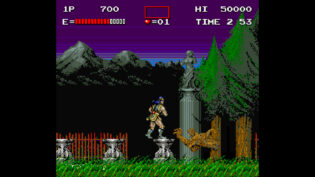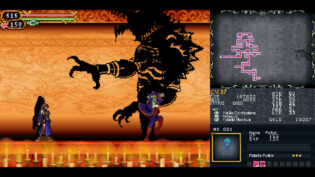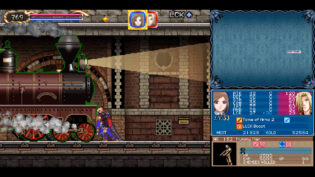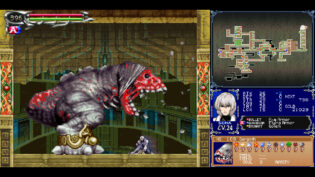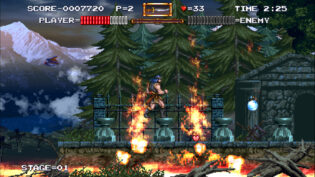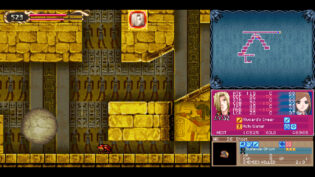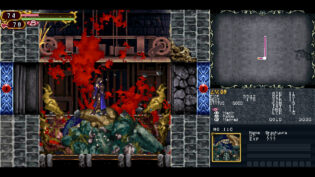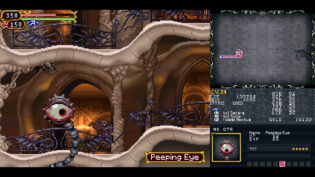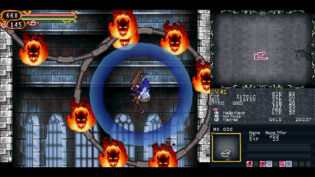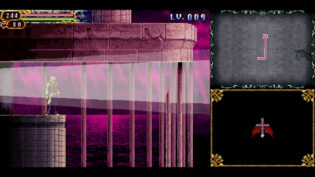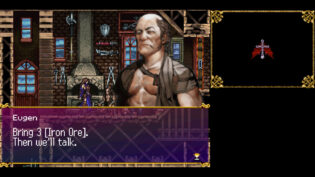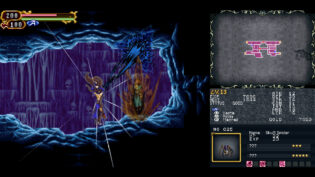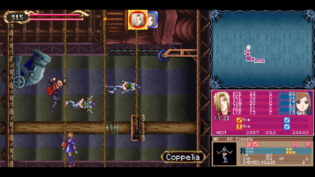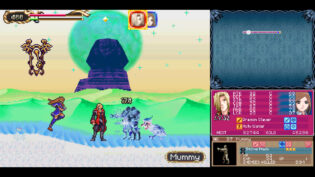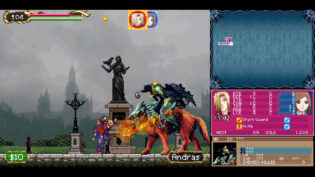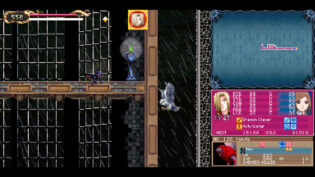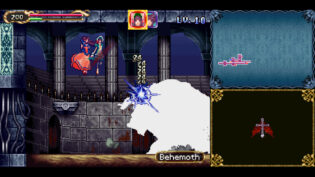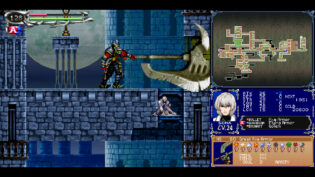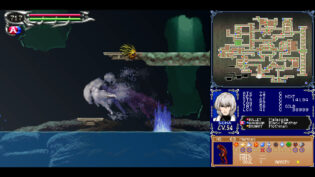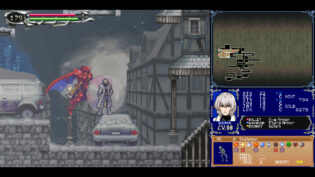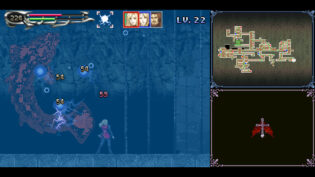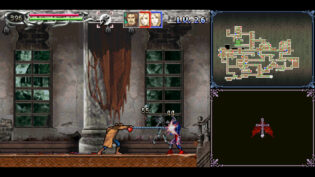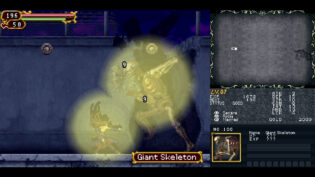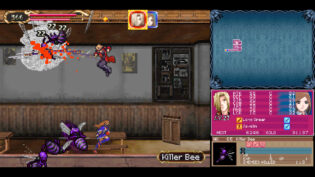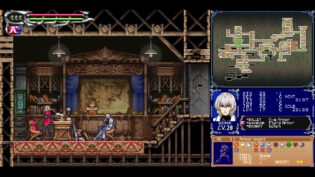O tempora is a series of retrospective posts where I play games from ages before to see if they stood the test of time.
I’m glad that Konami keep releasing games and collections from the time when they developed good games and were respected. Three years ago they released the really cool Castlevania Advance Collection that collected all “IGAvanias” (Castlevania titles with “metroidvania” world design, usually produced by Koji Igarashi) released for the Game Boy Advance. That collection was full of absolute bangers, though it was a bit of a shame that the games were just emulated originals, with all of their faults and bugs intact. But at least it was preserving the classics.
Now its time for the titles, originally released for Nintendo DS, with a cool bonus game added in. Surprisingly, revisiting these games was somewhat less enjoyable overall.
In this collection you will find Castlevania: Dawn of Sorrow, Castlevania: Portrait of Ruin, Castlevania: Order of Ecclesia, Haunted Castle and Haunted Castle Revisited, all available from one shared menu. In it, you can select any of the games included, listen to their soundtracks and watch the official art for the games and the scans of their manuals. And also the very limited and underwhelming options menu that at least allows you to select between different regional releases of each game. It’s still essentially emulation of the original Nintendo DS releases, so different quirks, bugs and nuances of each game seem to remain unchanged and unique to each regional version of the game. But as a bonus, you can use save states, rewind, somewhat awkward DS touch screen emulation with mouse or right analogue stick (or actual touch screen on Switch). And also helpfully, you can change the layout of the screens and be able to watch all of the menus and sub-menus at the same time, instead of needing to switch between them as it was in the original releases. Also curiously the DS titles are presented in the reverse release order in the menu.
There are some common elements and concepts between each game. All of them are built around a “metroidvania” world design, so the world is comprised of the interconnected rooms you explore and as the game progresses you will get abilities that let you explore more and change the way you traverse the world. However, only Dawn of Sorrow works in this very “traditional way”. Portrait of Ruin instead has separate dungeons you teleport to (somewhat reminiscent of Maze of Galious design). While Order of Ecclesia has a world map with completely disconnected locations, some of which are basically straight lines, designed like classic Castlevania stages.
Just like with GBA games, these titles also rely a lot on pure luck in terms of what optional equipment or abilities you will get out of enemies, be it “souls” in Dawn or “glyphs” in Ecclesia and if you want to 100% these games, you will have to grind. And all of them also have unlockable game modes where you play as different characters, who usually have a vastly different move set, but otherwise go through the exactly same game. Two of those get a story that is somewhat canon as well. And finally, while Dawn (like Aria) lacks any of the HP/MP upgrade items as things you want to find in the world, the other two games do get them back. And they serve as an additional motivation for exploration in said optional game modes, as the rest of the mechanics and equipment from the main game (apart from leveling up from killing enemies) are not present in them.
Other than that, the games are quite different in what they do, so I’ll describe each of them in order they are presented in the menu.
Well, after I mention the curious surprise in the Extra menu – Haunted Castle Revisited. The original arcade Haunted Castle is available emulated and it’s one of the most rude and unfair arcade games I’ve ever seen. Granted, I’m not into classic Castlevania too, but this game just murders you unless you know what’s coming. I didn’t finish the remake either, but it looks so impressive and cool in comparison. It’s a completely new game that reinvents the stages of the original arcade game with a mix of 2D and 3D visuals. It’s also utilizing the weird and crazy monster and boss designs of the original release, but they look even weirder and more bizarre (in a cool way). I think the fans of classic Castlevania games might find this one really fun. And even if you’re not among them, check the video playthroughs of the game, especially of the final levels and the Dracula fight. It’s so amazing, I’m surprised Konami seem shy to promote this inclusion in the collection.
But let’s talk about the main games. Castlevania: Order of Ecclesia is a game that a lot of people love and I understand why. It’s closer to the classic Castlevania titles in how the combat encounters feel. It can be incredibly fast and amazing if you know what you’re doing. There’s this very cool idea of magic Glyphs that are essentially weapons that run on your MP. And you can equip glyphs separately to each hand, to either build symmetric combinations for faster and more consistent damage output or mix them up for different situations or special combined attacks. Your MP regenerates very fast, so you can almost think of it as of a stamina bar, which was a clever and inventive idea too. Also the damage type plays an extremely important role, so you have to be constantly aware of the efficiency of your current glyphs. Out of all games in this collection it also has the best art style and the soundtrack in this game seems very underappreciated for how cool it is.
Yet, I hated playing it. As mentioned, I don’t like classic Castlevania, so that’s part of the problem. But on top of that, the game really wants you to know it. Your first playthrough is almost 100% bound to be a struggle by design and I’m not a huge fan of that. Plus, given that I love exploration, the very repetitive and primitive layout of the locations isn’t doing it for me. The optional quests are grindy and frustrating. And there are way too many parts in the game where you can get hit from off screen with no prior warning. I get why people love it, and you might be among those who will find this game their favorite too. But it’s not my thing and while the unlockable second game mode in this game is rather simple, I almost enjoyed it more. Also I enjoyed the indie title Timespinner, that is directly influenced by this game’s glyph system but far more focused on exploration, a lot more. While Bloodstained: Ritual of the Night is, in my opinion, just plain better in every way.
The unique mechanic of Castlevania: Portrait of Ruin is the fact that you control two characters at once. Both can be on the screen, with you directly controlling one (and able to switch to another at any point), the other controlled by AI (or standing where you asked them to stand) and when they receive damage, it lowers the MP instead of HP. Or you can play as one character, switching between who is on screen almost instantaneously. Which quite famously causes the character you’re switching to shout their name, leading to funny cacophony as you rapidly switch between them. The locations in this game are far more “metroidvania” in design, even with the dungeons being separated. And this also allowed some of these to be visually crazy and extremely interesting in how they look and feel. The balance is also alright, with most of your exploration feeling “not difficult”, but the boss battles can be quite challenging. And you can either be very good at the game, or make things a bit easier by grinding additional levels. This is a really fun game in general, with lots of fun exploration and good flow between locations. Though some of the dungeons can get a bit tedious and some of the players might find the game a bit on the easier side.
But where this game is easily the best out of this collection is in the unlockable game modes. The Richter mode is very fast and fun and Maria can throw cats at enemies, which is quite cool. But it’s the Sisters mode that is incredibly unique and features the best usage of the touch screen. In this mode, you fly all the time – while touching the ground your MP is regenerating, but using the D-Pad to go up just seamlessly makes you float (this time slowly draining magic). And both sisters you switch between attack using the touch controls. One feels more like a twin stick shooter, as touching the screen is aiming the rapid “bullet” shots out of her. But the other one damages things with her mind – anything that can be damaged on screen can be swiped and hit. It’s really cool and unfortunately somewhat awkward in this collection, as no control option on modern platforms will feel quite the same as the DS, but using the controller and mouse worked for me just fine. I wish there were other games built like that – with the world designed around a typical walking protagonist, but with you playing as a telepathic flying super being. And highly recommend checking this mode out when you complete the main game.
And finally – Castlevania: Dawn of Sorrow. Which… is actually quite disappointing. Everything good in it is what was good in Aria, but sometimes made better and most of the time not made worse. You still collect souls, though this time there are additional uses for them. And the movement abilities are more or less the same, it’s just that moving to more powerful DS hardware allowed the locations to look richer and more impressive. But then, there are annoyances and downgrades. The touch features here are an obnoxiously badly implemented gimmick, with the worst offender being infamous “magic seals”. Essentially, to enter a boss room you must first find a seal and once you fight the boss and deplete their health, you need to perform what essentially is a touch screen QTE. If you make a mistake or time out, the boss regains a portion of their health and you have to repeat the process until you succeed with the QTE. It’s pointless, frustrating and was the sole reason I’ve not finished this game back in the day, despite getting to the entrance of the very last part of the game. Sadly, the mechanic is kept in this collection, but you can opt to use buttons instead of drawing the seal. It doesn’t help and the mechanic is still terrible.
But even if it was completely disabled, this game would still feel inferior to its predecessor. The flow of the game feels off, lots of locations are very uninteresting, difficulty occasionally spikes very rapidly and with little reason. The story, that was actually quite cool in Aria, has no idea how to continue, so things just happen without much reason until the game ends. And even the unlockable game mode is disappointing. It’s trying to build itself on the formula of Castlevania III: Dracula’s Curse with several characters to switch between, but none of them are fun and one additional character was cut during development. Plus, the lack of the HP and MP upgrade items means that there’s little reason to even explore this huge world in this mode, letting it go to waste. Which is a shame, since the mode has a unique boss fight that’s pretty cool… But where I wanted to grind Aria of Sorrow to 100% completion, because I enjoyed the game, I gave up on Dawn and just wanted to finish the game.
That’s the collection. It doesn’t have any duds that are worth ignoring. But it’s also not one that will excite people as much as the Advance Collection did. Or how excited people would be if Symphony of the Night would get a proper modern re-release. If you’re a fan of classic action platforming Castlevania titles, you should definitely check Haunted Castle Revisited and Ecclesia. And if you like exploration focused games, Portrait of Ruin and Dawn of Sorrow will serve you well. I’m glad this collection exists, even if playing it wasn’t as enjoyable as I was hoping it would be.


